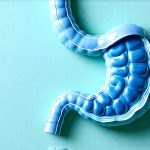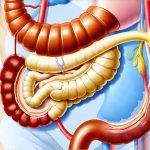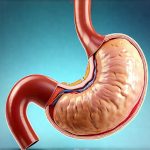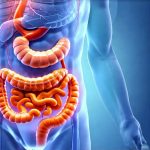That uncomfortable feeling after indulging in a rich meal – the bloating, the queasiness, sometimes even the urge to lie down – is all too familiar for many people. It’s often triggered by fatty foods, and while usually temporary, it can significantly disrupt your day. Understanding why this happens, and more importantly, what you can do to manage that post-meal nausea, is key to enjoying food without anxiety. The digestive system works hard, and sometimes a hefty dose of fat overwhelms its capacity, leading to delayed gastric emptying and those unpleasant sensations. This isn’t necessarily a sign of illness; it’s often simply the body signaling it needs time to process what you’ve consumed.
The severity of nausea after eating fatty foods varies greatly from person to person. Factors like individual digestive health, portion sizes, how quickly food was eaten, and even stress levels can all play a role. Some individuals may experience only mild discomfort, while others might feel quite ill. It’s crucial to differentiate between occasional post-meal nausea and chronic symptoms that could indicate an underlying medical condition; if you’re consistently experiencing severe or prolonged nausea, consulting a healthcare professional is essential. This article aims to provide practical strategies for managing occasional nausea resulting from fatty food consumption – offering both immediate relief techniques and preventative measures. If you struggle with more consistent discomfort, exploring tips for enjoying your favorite foods can be a great starting point.
Understanding the Digestive Process and Fatty Food Intolerance
The digestive process begins even before food enters your mouth; anticipation can stimulate saliva production, prepping the system. Once you eat, chewing breaks down food into smaller particles, and saliva contains enzymes that initiate carbohydrate digestion. From there, food travels to the stomach where it’s further broken down by acids and enzymes. The real challenge with fatty foods arises in the small intestine. Bile, produced by the liver and stored in the gallbladder, emulsifies fats – breaking them down into smaller droplets so they can be absorbed. This process takes time, and large amounts of fat can overwhelm the system, leading to delayed gastric emptying and that uncomfortable feeling. Some people have naturally slower bile production or gallbladder issues which exacerbate this issue.
The sensation of nausea itself is complex. It’s often linked to a mismatch between signals sent from the digestive system to the brain. When digestion is sluggish, or when there’s an abundance of undigested fat, these signals can be misinterpreted as signs of illness, triggering the vomiting center in the brain. This isn’t necessarily about being “intolerant” to fat; rather it’s about the capacity of your digestive system to handle it at that particular time. It’s important to remember that dietary fat is essential for health – providing energy and supporting hormone production – so eliminating it entirely isn’t the goal. Instead, the aim is to find ways to manage its consumption and minimize discomfort. For those managing other issues alongside digestion, managing acid levels can be a helpful strategy.
Furthermore, the type of fatty food can make a difference. Highly processed foods laden with saturated and trans fats are often more difficult to digest than those containing healthier unsaturated fats found in avocados, nuts, or olive oil. This isn’t just about the fat itself; these processed foods frequently lack fiber, which is crucial for healthy digestion.
Immediate Relief Strategies
When nausea strikes after a fatty meal, quick action can help alleviate symptoms. It’s tempting to lie down immediately, but sometimes gentle movement can be more effective. A slow, leisurely walk – even just around the house – can aid digestion and prevent food from sitting stagnant in your stomach. Avoid strenuous activity, however, as this can worsen nausea.
- Sip clear fluids: Water is best, but you could also try ginger ale (in moderation, due to sugar content) or peppermint tea. Small, frequent sips are more effective than gulping down large amounts of liquid. Hydration is key when your body is trying to process food.
- Ginger: Ginger has long been known for its anti-nausea properties. You can try ginger chews, ginger tea, or even a small piece of fresh ginger. The active compounds in ginger help soothe the digestive tract and reduce nausea signals to the brain.
- Deep breathing exercises: Focusing on slow, deep breaths can help calm your nervous system and reduce feelings of anxiety associated with nausea. Inhale deeply through your nose, hold for a few seconds, and exhale slowly through your mouth.
Avoid lying down immediately after eating; instead, try to remain upright for at least 30 minutes to allow gravity to assist the digestive process. Resist the urge to eat anything else until the initial wave of nausea subsides. Trying to “soak up” the fat with more food can often backfire and make things worse. If the nausea is severe or accompanied by other symptoms like fever, vomiting, or diarrhea, seek medical attention. Simple tea rituals may also offer some relief during these times.
Long-Term Preventative Measures
Preventing post-meal nausea is far easier than trying to alleviate it once it starts. This involves making conscious choices about what you eat and how you eat. Portion control is paramount. Reducing the amount of fatty food you consume in one sitting can significantly lessen the burden on your digestive system. Instead of a large, indulgent meal, opt for smaller, more frequent meals throughout the day.
- Choose leaner protein sources: Swap out fatty cuts of meat for lean options like chicken breast, fish, or beans.
- Increase fiber intake: Fiber helps regulate digestion and promotes satiety, which can prevent overeating. Include plenty of fruits, vegetables, and whole grains in your diet.
- Healthy Fats: Incorporate healthy fats from sources such as avocados, nuts, seeds, and olive oil instead of processed foods with trans fats.
Mindful eating is another powerful tool. Pay attention to your body’s hunger and fullness cues, and avoid distractions while you’re eating. Eating slowly allows your brain time to register that you’re full, reducing the likelihood of overeating. Consider keeping a food diary to identify specific fatty foods that trigger nausea for you – everyone is different. This can help you make more informed dietary choices in the future. If you find this challenging, eating mindfully with a reactive gut might offer helpful strategies.
Modifying Meal Composition and Timing
The way you combine foods can also influence digestion. Eating a high-fat meal on an empty stomach can be particularly problematic, as there’s no other food to slow down absorption. Combining fatty foods with fiber-rich carbohydrates can help buffer their impact. For example, instead of eating French fries alone, have them with a side salad or some whole-wheat bread.
- Pre-meal preparation: Consider taking a digestive enzyme supplement before consuming a fatty meal (consult with a healthcare professional before starting any new supplements). These enzymes can aid in the breakdown of fats and reduce digestive discomfort.
- Timing matters: Avoid eating large, fatty meals right before bed. This can disrupt sleep and exacerbate nausea symptoms. Allow at least 2-3 hours for digestion before lying down.
Finally, managing stress levels is crucial. Stress can significantly impact digestive function, making you more susceptible to nausea. Incorporate stress-reducing techniques into your daily routine, such as yoga, meditation, or spending time in nature. Remember that listening to your body is the most important thing you can do – and adjusting your eating habits accordingly will lead to a much more comfortable dining experience. Seasonal eating tips may also help create a more harmonious relationship with food, especially as the seasons change. Also consider nutrition tips for managing gas during colder months.


















